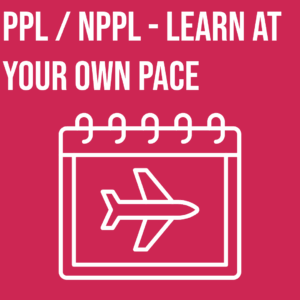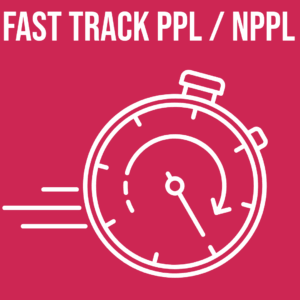Light Aircraft Pilot Licence (Aeroplane) – LAPL (A)
Showing all 2 results
The Light Aircraft Pilot Licence (LAPL) is an quicker alternative to the EASA Private Pilot Licence (PPL), offering most of its benefits. It has less stringent medical requirements and requires less hours flight experience. Therefore it is both quicker and cheaper to obtain. Ideal for people who only want to fly light aircraft within the United Kingdom and have no desire to fly larger aircraft, commercial aircraft or gain an instrument rating. Also it can be converted to a PPL later if needed.
LAPL Privileges
- Act as pilot in command on single engine piston aircraft with a maximum take off weight of 2000kg.
- Fly up to 3 passengers at a time. You must first complete ten hours of flight after the issue of your licence before carrying passengers.
- Able to fly anywhere within the United Kingdom.
- Ability to add Night and Aerobatic ratings to the licence.
LAPL Pre-Requisites
You must be able and willing to commit to a certain amount of self study at home in addition to flying lessons and passing the theoretical exams.
- The minimum age to hold a licence is 17, students can fly solo at 16.
- LAPL Medical Certificate, this can be completed by an Aeromedical Examiner (AME) or your GP if they are willing.
- Be able and willing to commit to a certain amount of self study at home in addition to flying lessons and ground school.
LAPL medical requirements
Before you can fly solo and apply for a LAPL licence you need a LAPL medical certificate. The medical requirements for a LAPL are reduced compared to the class 2 medical needed for a PPL. The exact scope of this is complex and details would need to be discussed with an Aeromedical Examiner. However, suffice it to say that there are many conditions that would not qualify for a Class 2 medical who would qualify for a LAPL medical. Indeed, for some people who have previously held a PPL and have lost their medical may find themselves still able to fly if they convert to a LAPL.
LAPL Theoretical Knowledge
There are 9 theoretical exams which must be passed in order to start practical lessons and ultimately apply for your LAPL. These are multiple choice and not as bad as they sound! We can help you prepare with our theoretical exam courses and one to one training.
LAPL Training
The flying training will be done with a qualified instructor and is usually done on the same type of aircraft for consistency. In order to be able to fly solo the above mentioned medical must be gained. The applicant must have a minimum of 30 hours to apply for a licence. These hours are made up as shown.
- 15 Hours of dual instruction.
- 6 Hours of solo flight which is supervised from the ground by an instructor inc 3 hours cross country.
- Hours of solo cross-country time which must include a qualifying cross country trip of 80NM (150km) with a stop at an aerodrome other than the one of departure.
The remaining hours are made up of additional revision as required.
These hours are an absolute minimum. Because we all learn at different paces some people may need more time to reach the standard required for the skills test.
LAPL Skills Test
Once you have obtained at least 30 hours flight time and your instructor feels that you have reached the required standard you will be recommended for a skills test. All theory exams must have been passed to be eligible and you must have a current medical. It must be passed within 18 months of completing the theory exams.
The test usually consists of around two hours with an examiner (Almat have their own examiners!) You will be asked to demonstrate what you have learnt.
LAPL – Frequently Asked Questions
Can I start a LAPL and change to a PPL During Training?
No, you cannot! It is very important that people planning to pursue the LAPL are clear on this point. Hours flown towards the issue of a LAPL will not count towards a PPL. However once a LAPL has been issued this can be converted to a PPL with further instruction.
How much does an LAPL cost?
This is dependant on a number of factors such as what type of aircraft you fly and how often you can commit to flying. Generally the more frequently you fly the less hours it will take you to pass which will of course work out cheaper. A good figure would be approximately £5500 for the entire course. This is by no means a definitive cost, 30 hours is the legal minimum required to gain a licence many people take longer to reach the required standard. In addition there is also equipment that must be purchased in order to complete the training. Please keep both of these factors in mind when budgeting
How often should I fly?
The simple answer to this is as often as possible! The more often you fly the more consistent your training will be. Instructors find that students who fly infrequently will spend much of their lesson revising skills that have learnt previously. This will obviously take a lot longer and flying is an expensive activity. Therefore we recommend you come as often as you can afford.
What are the Negatives of a LAPL compared to a PPL?
So, what is the downside of a LAPL you may ask? The most important difference is that a LAPL may only be used within UK airspace. A LAPL does not allow any instrument flying whatsoever, the PPL syllabus does contain ‘instrument appreciation’ this is completely omitted in the LAPL syllabus. The LAPL also cannot be used as the basis for a commercial licence. The LAPL is a recreational only licence and as it is a single engine piston only licence it is actually much easier to keep current. SEP currency is done on a 12-month rolling basis, as long as the prerequisites of 12 hours and 1 hour with an instructor are met the licence stays current with no signatures required. In comparison, the PPL is a bit more complex requiring the pre-requisites to be met in a certain time period and a signature from an examiner.

